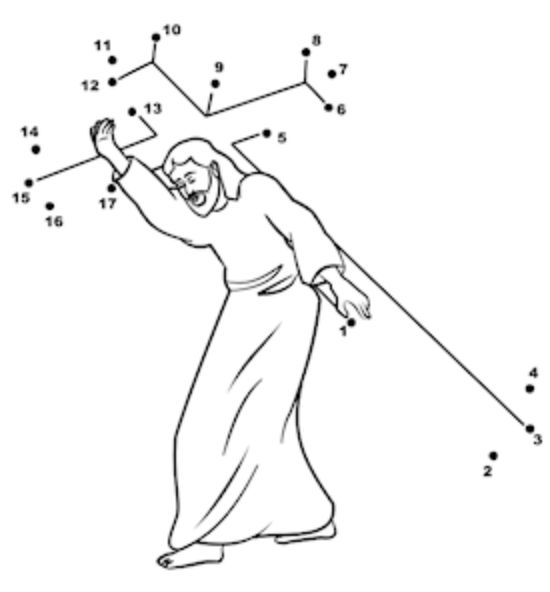Connecting The Dots
As a child, I loved games that involved connecting the dots. I always thought it was so cool to start off with a bunch of dots that appeared to be random and watch the mystery resolved as the dots were connected.

Growing in one’s faith is also like a game of connecting the dots. That's because it involves a process of discovering the relationship between the things Christian are supposed to do and the meaning behind those things.
Take the Sacraments as an example. On their own, they’re like a floating dot. Bread and wine are but bread and wine, waiting to be connected to something. That’s exactly what Jesus did on the night He was betrayed when He connected the Pascal meal to His death. This connection made their meaning clear.
Of course, in the game of connecting the dots, there is always the danger that we might connect the wrong dots. Likewise, in the Christian life, we must avoid connecting God’s dots to the wrong things. For example, some have mistakenly connected the baptism dot to their salvation when what it should be connected to The Great Commission. When we make the right connection, we understand that it’s supposed to be a witness to a watching world, performed by those who have already been saved.
Once the dot of baptism is connected to the right thing, God’s intentions become evident.
"And that water is a picture of baptism, which now saves you, not by removing dirt from your body, but as a response to God from a clean conscience. It is effective because of the resurrection of Jesus Christ" (1 Peter 3:21).
That Special Thing That Looks Like A Caribou Calf
“Translating the Bible into Inuktitut, the language of the Inuit people in the Arctic, has long been a challenge. The language has no word for sheep, horse, or donkey—but it has 30 words for snow. The translation currently in use in 90 years old and rife with awkward phrases. It renders ‘the lamb of God,’ for instance, as ‘God’s special thing that looks like a caribou calf.’ But thanks to satellite television and education, the Inuit people are now familiar with more words. Thus in a newer translation of the Christian Greek Scriptures …’sheep’ will now be rendered by the Inuit term ‘sheepi,’ but donkey will remain ‘the thing with big ears.’”
God’s Lamb is the same in any language. No matter what you call Him, He still takes away our sin. “Behold the special thing that looks like a caribou calf who takes away the sins of the world!” (John 1:29).
Barnett Gushin
Separated By The Blood
Inside the Tabernacle of ancient Israel, was a room called the Holy of Holies, separated from the Holy Place and the rest of the Tabernacle by a thick veil. In this inner room rested the Ark of the Covenant, inside of which was stored the Law of God as handed down to Moses on Mt. Sinai. Like a cloud, the Shekinah Glory of God hovered over it all. Once each year, on the Day of Atonement, the high priest would enter the Holy of Holies to sprinkle blood upon the Mercy Seat of the Ark for the sins of all of Israel.
Says H.L. Wilmington, “Perhaps the most thrilling truth of the Tabernacle is seen here: the one thing that stood between the broken law that man could not keep and the holy and righteous wrath of God was the blood of the lamb.”
"In fact, the law requires that nearly everything be cleansed with blood, and without the shedding of blood there is no forgiveness" (Hebrews 9:22).
Illustration Exchange